Professor Kingsley Moghalu, former Deputy Governor of the Central of Bank of Nigeria (CBN), delivered a lecture at the AFREXIM Bank 30 years anniversary celebration in Cairo Egypt on Monday 8th May 2023.
Prof Moghalu, who is the President, Institute for Governance and Economic Transformation, pointed out the place of Africa in the global trade ecosystem; the impact of AFREXIM bank in financing development projects across the continent in the last 30 years and projected the next 30 years for the Bank, and how it can achieve transformative impact, in the context of new possibilities created by the African Continental Free Trade Area (AFCFTA).
Below is text of the lecture:
AFREXIM Bank: The Next 30 Years
30th Anniversary Founders Day Lecture Of the African Export-Import Bank
By
Professor Kingsley Moghalu
Founder & CEO, Sogato Strategies LLC
President, Institute for Governance & Economic Transformation
Cairo, Egypt. May 8, 2023
Introduction
There is no question — in my mind at least — that world trade is the foundation of the global economy and the main engine of wealth creation. It also remains the chief channel of the phenomenon of globalization. According to the United Nations Conference on Trade and Development (UNCTAD), the total value of global trade reached the record level of $28.5 trillion in 2021. As we mark the 30th anniversary of Founders Day of Afreximbank, I would like to salute the founding fathers of the Bank – the governments of African countries, African and non-African financial institutions and other investors who founded and own this multilateral trade bank and had a vision to create it for the purpose of driving intra – and extra-African trade. I salute the Board of Directors and Management as well of Afreximbank, led by Professor Benedict Oramah, for the work you all are doing to have the bank deliver value and stimulate prosperity in Africa.
Join our WhatsApp ChannelIn my lecture, I would like to achieve three things. I will discuss Africa in the world trade ecosystem broadly as a necessary foundation for discussion of Afreximbank’s role, impact and future possibilities. I will then assess 30 years of Afreximbank’s existence and work. I will then project the next 30 years for the Bank, and how it can achieve transformative impact, in the context of new possibilities created by the African Continental Free Trade Area (AFCFTA).
Africa In World Trade:
Africa has for decades been structurally disadvantaged in world trade. The continent’s share of world trade is just 3%. There are many reasons for this, but perhaps the most important statistic to remember is this: 71% of world trade is in manufactured goods. Only 12% of world trade is in agriculture (farm products). African countries trade in the global arena not in manufactured, value-added goods, but mostly in agricultural commodities and minerals resources. This reality has roots in Africa’s colonial history in the 19th and 20th centuries when the structure of the economies of African countries was shaped to serve as a source of raw materials for the industrial production and consumption of colonizing countries.
This practice continues, with a few exceptions, to this day. The framework has also been maintained for decades in the rules-based international trading system of modern times moderated, first, by the General Agreement in Tariffs, and Trade (GATT) and, from 1995, by GATT’s successor organization- the World Trade Organization (WTO). Over the past 70 years, the GATT and the WTO have created an international trading system that has contributed to unprecedented global economic growth. Africa has not benefited from this explosion of global trade. This is not just because of the structural factor of the skewed nature of international trade in favor of manufactures, but also because developed countries have deployed protectionists policies that limit access to their markets of agricultural products. At the same time, African countries were prevailed upon to increasingly liberalize their own markets. WTO members cannot agree, for example, on how to cut the large subsidies developed countries pay their farmers, which makes Africa’s agricultural products unviable for exports to developed country markets.
The Doha round of negotiations among WTO members, which began in 2001, concluded in 2016 in Nairobi, Kenya with no agreement on agricultural subsidies and access to the agricultural products market that the African nations sought. Complicating the WTO negotiating framework in the failed Doha round were two principles. WTO decisions are reached by consensus, which means everyone must be persuaded before a trade deal can be struck. On top of that, “nothing is agreed until everything is agreed”. The latter requirement is referred to as the “single undertaking” negotiating framework.
Beyond the difficulties imposed by the global trade framework on African countries there are other, more homegrown obstacles that have conspired to keep Africa’s share of world trade low. These include:
Weak manufacturing base: the absence of a strong industrial base for the manufacturing of finished value-added food has remained a major structural challenge for the continent for several decades.
Low intra-regional trade: Intra-African regional trade stands at a low 14.4% of the continent’s exports. It is 68% for Europe, 59% for Asia, and 30% for North America. This shows that a vast majority of Africa’s trade is extra-regional. Given the disadvantage created by the structure of the continent’s economies, this is an own goal because the continent is not competitive in this scenario.
It is important to note, however, that there are valid arguments that the levels of intra-African trade are not as low as is commonly believed. There are two main reasons for this trend. The first is that trade in commodity exports, which are mostly to destinations outside Africa, distorts the picture of intra-African trade. The second is that intra-regional trade figures in Africa are obscured by the trade patterns of the continent’s three largest economies – Egypt, Nigeria, and South Africa. These countries carry on a lot of extra-African trade for reasons of history, Nigeria’s oil dependence, and South Africa’s Apartheid legacy. Moreover, informal cross-border trade within sub-regional groups on the continent is vastly under-reported.
Weak infrastructure: Africa has been unable to diversify its economies because of weak infrastructure. This includes not just physical infrastructure, such as roads, rail and electricity but also social infrastructure such as health, education and skills. Transport and electric generator costs add up to 75% of the total prices of African goods, making such products uncompetitive in the global market in price terms.
Trade facilitation challenges: Ports are poorly equipped and administered, leading to delays and increased costs of clearing goods.
Quality assurance concerns: manufactured goods in African countries frequently face obstacles of meeting quality standards for global exports, and so experience a high degree of rejection from potential export destinations.
AFCFTA
Against the background of Africa’s weak position in world trade, as well as a relatively low-level of intra-regional trade, the establishment of the African Continental Free Trade Area by member states of the African Union is a watershed development in Africa’s contemporary and future positioning in world trade. The AfCFTA, which commenced officially in January 2021, is a recognition of the reality that intra-African trade, especially in a global trade order that has been inimical to the achievement of Africa’s development aspirations, is the only path to the continent having a shot at prosperity. Going forward in the years ahead, I believe the continental trade agreement will provide an enabling environment for the work of Afreximbank that would be far more powerful than was the case in the past 30 years of the Bank, without prejudice to the Bank’s significant achievements. AfCFTA will help resolve, in a foundational and potentially powerful manner, the limitation of whether a continental trade bank, however well run, can catalyze economic transformation through trade without the right normative framework to underpin its work.
Thirty Years of AFREXIM Bank
Afreximbank was founded in 1993, with four classes of shareholders: – Class “A”- African governments, African central banks, and African public institutions; “Class B”- African financial institutions and African private investors; “Class C”- Shares held by non-African investors, mainly international banks, and expert credit agencies; and “Class D”- Shares held by any investor and are fully paid par value.
Uniquely, Afrixembank is both a multilateral institution with full protections in international law for its operations in member countries, but also a profit-making financial institution that pays dividends, offers a wide array of direct trade finance facilities, credit guarantees and other risk management products, and advisory services. In short, Afreximbank aims to be total trade finance solution provider for Africa- a “trade finance supermarket “- to sovereign and private sector entities. As a financial institution, the Bank has achieved success over the past 30 years. It has never incurred annual losses since it was founded, has managed its risks exposures successfully, and is steadily growing its profits. Its capital is $5 billion, with its shareholders consistently supporting its capital reason efforts, and has assets of $32 billion.
Among the successes and increasing impact of Afreximbank in the African continent are:
Its strong network with African commercial banks to which it provides letters of credit confirmation lines in support of cross-border trade. According to Afreximbank’s President, Benedict Oramah, Afreximbank aims to onboard 500 banks in the continent with aggregate lines of over $8 billion and has already onboarded 480 of these banks.
In collaboration with the African union and the AfCFTA Secretariat, Afreximbank has created a Pan-African Payment and Settlement System (PAPSS) to facilitate cross border payments in national currencies. This initiative will help overcome currency exchange constraints that have held back greater volumes of inter-African trade and is projected to save the continent $5 billion in transfer charges.
Afreximbank support to African countries to create/expand industrial parks in special economic zones to overcome the infrastructure bottlenecks that stunt industrialization. Projects valued at $1.2 billion are underway in 10 countries.
Juxtaposed against these and several other successes, however, we must question what can be described as the somewhat limited reach of the Bank’s activities. This appears to me to have occurred in two ways. The first is the geographical concentration of the Bank’s exposures, which potentially limits its real impact when measured on a continental scale. More than 50% of all its exposures are to entities in Egypt and Nigeria, Afreximbank’s two largest shareholders. Against this we must note, however, that concentration risk remains low, with the Bank’s five largest exposures making up only 26% of banking portfolio at the end of 2021.
While Afreximbank’s ratings have improved from BBB- to BBB, I would argue from all this information available about the Bank, that its ratings should perhaps more appropriately be AAA-, especially when we consider that the African Development Bank has a stellar rating of AAA. There certainly is a case to be made for a fairer assessment methodology for the credit rating agencies rating of African sovereigns.
The United Nations Development Program has published a study showing how subjective ‘’idiosyncrasies” in the major rating agencies have cost African countries $75billion in excess interest payments and foregone funding. To put the implications for Africa’s development in perspective, UNDP says this $75 billion is 80% of Africa’s annual infrastructural needs (estimated at $93 billion), more than twice the cost of reducing malaria by 90% ($34 billion), and 6 times the cost of vaccinating 70% of Africans ($12.5 billion) to achieve herd immunity to COVID-19. While it is true that Afreximbank, in lending to both sovereign and non-sovereign entities, operates in a somewhat riskier environment, the fact that it has managed its risk so well over the years is noteworthy and deserves to be rewarded with a higher credit rating.
IV. AFREXIMBANK: the Next 30 Years.
Afreximbank has been a successful, impactful institution. But in the next 30 years, it can go beyond success to becoming transformative for Africa in world trade. It is fortunate that the AfCFTA has arrived to fill the normative and institutional partnership that Afreximbank needs to fulfil this role. This is because finance alone, without the necessary underlying philosophical, political, legal and institutional frameworks, cannot be transformative. As we saw at the beginning of this conversation, Africa’s share of world trade has remained at a low 3% despite the existence of numerous banks and other financial institutions in national jurisdictions on our continent. The key then, is for Afreximbank to zero in on the various aspects of the AfCFTA that, combined with Bank’s role and operations, will bring about the needed continental transformation by 2050.
The AfCFTA’s contributions to the African economy will be huge. It is the world’s largest free trade area, creating a single market out of 55 countries of the African Union and eight regional economic communities. The continental free trade agreement is expected to boost Africa’s income by $450 billion by 2035, and to grow Africa to a $29 trillion economy by 2050. The fact that 54 member states of the African union have already signed the treaty and 46 have deposited their instrument of ratification within just five years of the signing of the trade agreement in Kigali, Rwanda in 2018 is a hopeful sign that the future can be African.
With the AfCFTA Secretariat and Afreximbank in a strong partnership, we can achieve, at least, an African half-century by 2063 in accordance with the vision of the AU. Already, the United Nations Economic Commission for Africa has reported that, because of the AfCFTA, intra-African trade increased by 20% in 2022.
A core mandate of the AfCFTA is to remove trade barriers (tariff and non-tariff) and thus boost intra-African trade. Specifically, the continental free trade agreement aims to advance trade in value added production across all sections of the continent’s economy. As we saw at the beginning of our discourse, it is this trade in value-added goods and services, not trade in raw commodities, that creates the wealth of nations and makes up the greatest component of global trade. The external challenge of access to global markets, combined with low levels of intra-regional trade and our continent’s structural weakness in competitive industrial production and infrastructure, have marginalized Africa in the world economy. The world has long shifted from comparative advantage as the basis for international trade, to competitive advantage based on knowledge, skill, and innovation, which enable production that has competitive value at competitive prices. These finished products utilize components and value chains from multiple locations.
While the WTO remains an important global trade framework, and Africa is fortunate to have a distinguished daughter of the continent (Dr. Ngozi Okonjo-Iweala of Nigeria) as its head, Africa was absent at the creation of the international trade order shortly after the Bretton Woods institutions were created after World War II. That trade order was born through the proposed International Trade Organization (ITO). The ITO, however, could not take off because the United States Congress at the time declined to ratify US participation in the organization. Informal discussions on global trade, then, evolved into the General Agreement on Tariffs and Trade (GATT).
The effect of Africa’s absence at the scene of global trade’s institutionalization in the late 1940s and early 50s because African countries were still mainly colonies at the time, remains with us today. Thus, AfCFTA has arrived to give Africa what the WTO simply was not designed to give it – a place under the sun of global trade. This reality is further affirmed by the fact that global trade has progressively become driven mainly by regional dynamics. Thus, Afreximbank’s trade financing over the next 30years will have more meaning and impact because the fundamental challenges to the continent’s trade ambitions will now be addressed resolutely.
Afreximbank has already stepped into the breach with what finance is best placed to do. And that is the question: who or what pays for the loss of tariff and customs duties in Africa’s free trade area? According to Afreximbank and the AfCFTA Secretariat have established and AfCFTA Adjustment Facility that will cushion African countries from fiscal revenue losses from the tariff removals associated with the AfCFTA and to help the private sector retool their operations as they reorient their operations towards the continental market”. The AFCFTA Adjustment Fund requires $10 billion over the next 5-10 years, and Afreximbank has already funded the facility with $1 billion. The Adjustment Fund and the PAPSS, are operational instruments that, if efficiently and consistently applied, will do much to achieve the vision of Afreximbank for African trade.
The AfCFTA will be negotiated and become operational in two phases. Phase 1 consists of trade in goods, trade in services, dispute settlement mechanism, and customs and trade facilitation. Phase 2 consists of intellectual property rights, investment, competition policy, digital trade, and women & youth in trade. In this sense, AfCFTA goes well beyond standard free market agreements that focus mainly on trade in goods.
As we look to the future of African trade, two questions arise beyond the initial and foundational Afreximbank initiatives on payment systems and the AfCFTA Adjustment Facility.
• How should the bank frame its priorities in the years ahead in terms of its trade financing, guarantees, and advisory services?
• Is Afreximbank’s institutional framework fit for purpose in this age of AfCFTA?
I believe the African Union’s Boosting Intra-African Trade (BIAT) action plan provides a useful anchor for moving forward. The BIAT plan is divided into seven clusters: Trade Facilitation, Trade Policy Reform, Productive Capacities, Trade Related Infrastructure, Trade Finance, Trade Information and Factor Market Integration. Of these components, one that is of critical importance, but is often neglected, is Trade Policy Reform, especially at domestic national levels. Afreximbank needs to pay particular attention to this because many multilateral finance organizations often assume – wrongly — that their efforts alone will fix problems of development in developing countries. These countries buy into this false notion too, and in doing so rob themselves of agency and the primary responsibility for their own progress.
It is a well-known fact that, except for South Africa, African countries lack seasoned and well-grounded trade bureaucrats and policy makers. This creates a policy vacuum at national levels, compounded by an absence of fundamental understandings about the political economy of international trade. This in turn leads, at the domestic levels, to erroneous policies that frequently are either too liberal for the good of African countries, or too nationalistic, based on macroeconomic populism that can be economically destructive.
At the international levels, this lack of policy knowledge and nuance results in a weak negotiating ability in global trade rounds. It also leaves to African countries easily becoming client states to competing global powers. Several economies in Africa have suffered from either or both kinds of policy dysfunction in recent years. As we move into the era of AfCFTA-based intra-regional trade, Afreximbank should build partnerships with countries to stimulate trade policy capacity. Financing trade transactions, trade facilitation or trade-related infrastructure alone may not be enough to solve Africa’s trade challenges.
Is Afreximbank’s institutional structure fit for the future we seek in intra and extra African trade? As we have noted earlier, Afreximbank’s mandates are cross-cutting enough to meet the challenges it has faced over the past 30 years. And the Bank has mobilized impressive levels of funding for trade transactions and trade related transactions in Africa, attested to by its $32 billion in assets. But Africa is a vast continent with deep financial needs, especially in its private sector. In this context, I believe the Bank needs to execute its long planned international IPO to raise additional capital to back its ambitious plans in the AFCFTA era.
Further Recommendations:
From an examination of the mandate and strategic pillars of Afreximbank, the obstacles to Africa’s participation in world trade, and the ambitions of African leaders and citizens for the continent’s free trade area agreements, I would additionally recommend the following as important priority areas for Afreximbank’s continuing or increased attention, in addition to national trade policy reform and additional capitalization:
Invest in specialization and the acquisition of trade-related skills in African countries to drive this specialization – productive knowledge to achieve economic complexity which is the basis of modern global trade, and which will be necessary for competitiveness in intra-African trade as well.
Ports facilitation and trade-related infrastructure, in particular electricity – the absence of which makes manufacturing extremely costly and uncompetitive, weakening Africa’s ability to participate in global trade in finished products.
Risk guarantees for Foreign Direct Investment (FDI) in Africa.
Special Economic Zones, agro-processing and light manufacturing.
Africa Quality Assurance
Afreximbank should increase its focus, in the context of extra-African trade, on preferential trade arrangements such as the under-utilized Africa Growth and Opportunity Act (AGOA). Crude oil trade with the United States still makes up most of AGOA trade – a reality that must give way to more beneficial trade in unique finished goods for which there is a ready market and for which Quality Assurance for the products for export is assured. The rules of origin for extra-African trade under AGOA have been found to be more beneficial to stipulating exports from Africa than the riles of origin under the Everything but Arms initiative of the European Union.
In short, I believe Afreximbank should increase its financing of initiatives to overcome structural obstacles to intra and extra African trade such as the ones listed above, relative to financing trade transactions in and of themselves. This approach will align more with the goals of the AfCFTA and yield more transformational outcomes for Africa in the context of the continental trade agreement and beyond. It is time for Afreximbank to move from comfortable success to transformational impact.
Finally, I believe Afreximbank needs to become much more known – and accessible – in Africa’s trade and business communities. The bank needs to shift more to opportunities that exist at the bottom of the pyramid in African trade. This will better create inclusive growth in African economies.
Overall, Afreximbank is without a doubt one of Africa’s success stories. Against the odds, it has succeeded and showcased itself as an effective, well-run, and profitable institution, defying stereotypes about the continent. Of this we should be proud. If the Bank brings the ambition with which it evolved in the past 30 years to the next thirty, with the underpinning of the AfCFTA, we are likely to witness more fundamental transformations in African trade by the end of the next three decades.
Thank you.

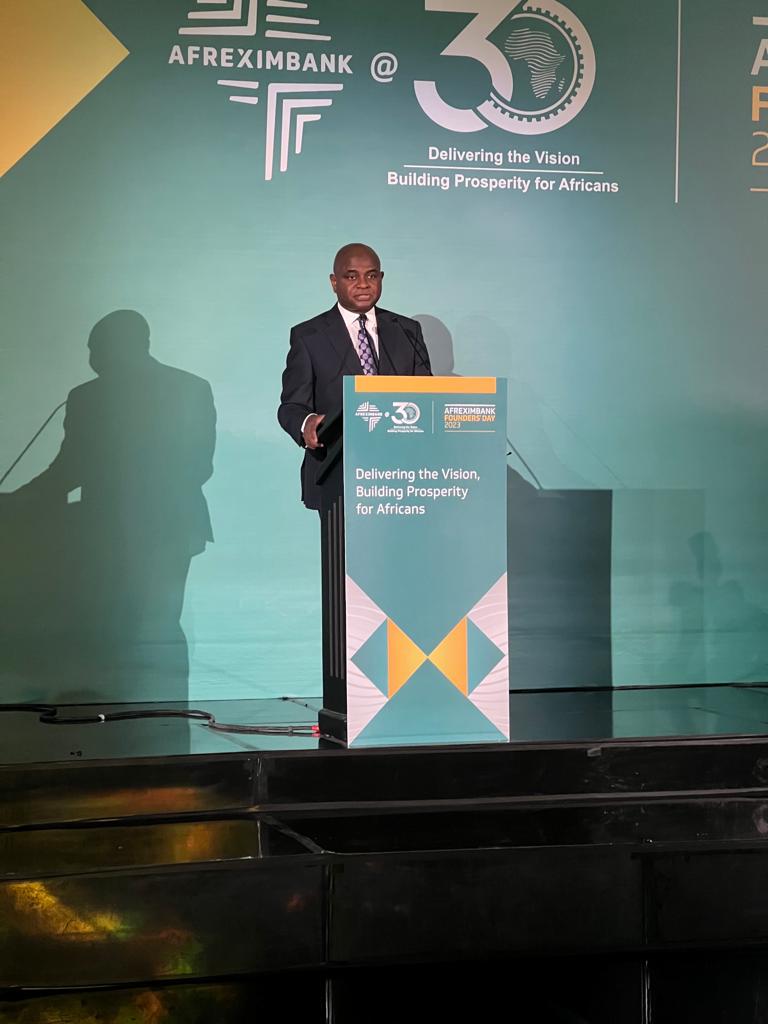


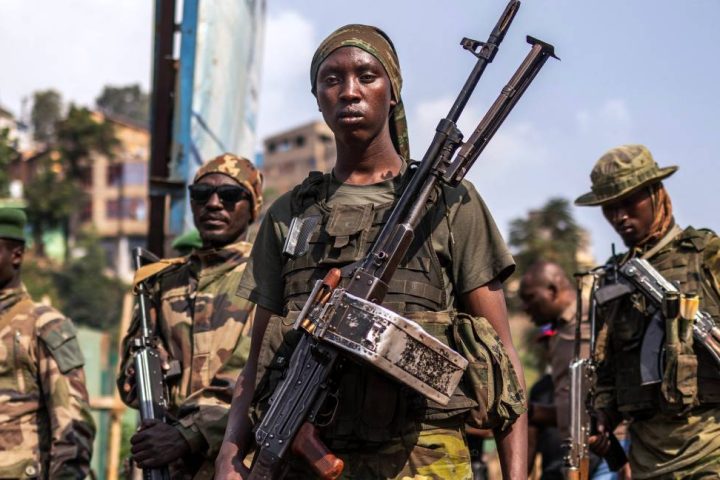
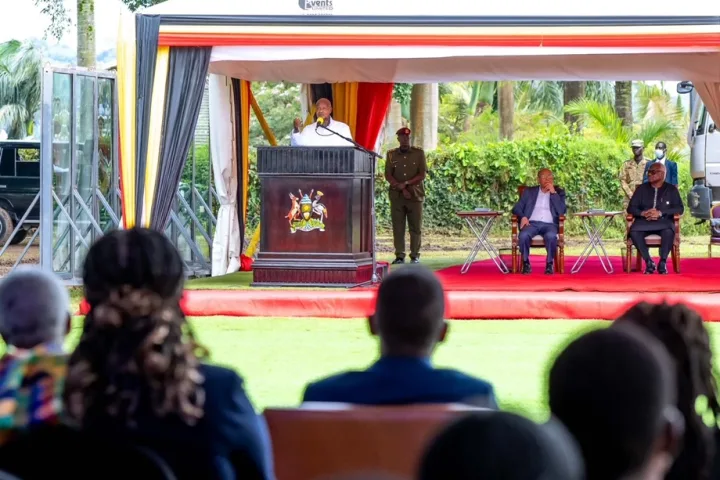
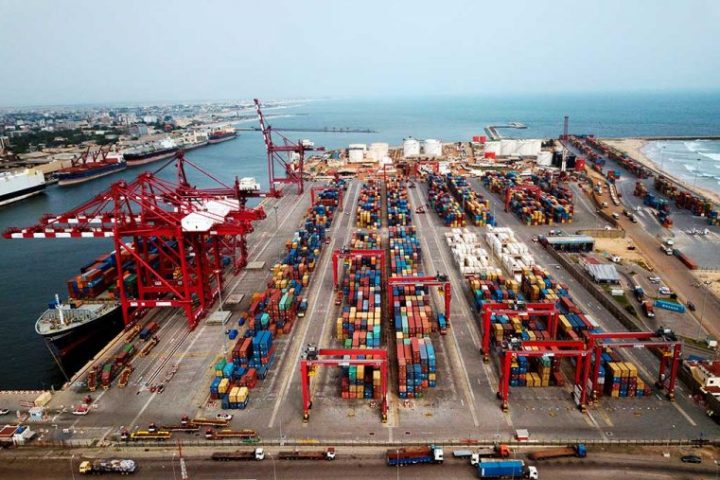



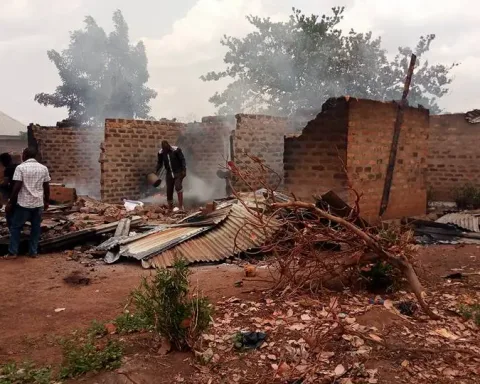

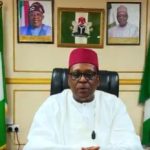




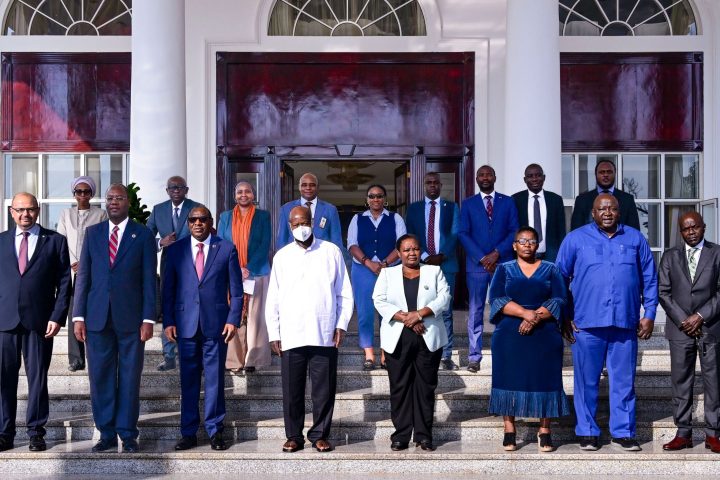
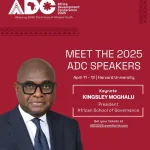
Follow Us